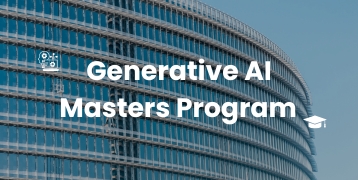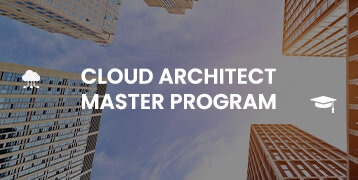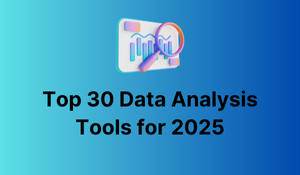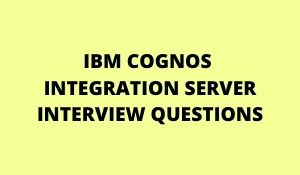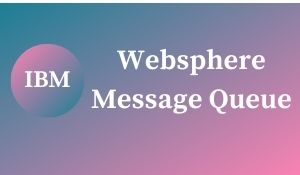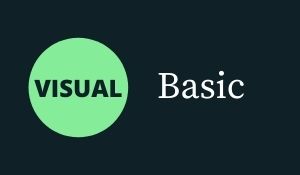
1. What is VB.Net?
Visual Basic .NET (VB.NET) is an object-oriented computer programming language implemented on the .NET Framework. Although it is an evolution of the classic Visual Basic language, it is not backward-compatible with VB6, and any code written in the old version does not compile under VB.NET.
Visual Basic. ASP NET runs on the .NET framework, which means that it has full access to the .NET libraries. It is a very productive tool for the rapid creation of a wide range of Web, Windows, Office, and Mobile applications that have been built on the .NET framework.
2. What is Metadata and namespace?
Metadata is termed as “Data about the content of the data” and it is found in the catalog of libraries. Practically, it is used at the back side of the book to see the necessary topic. A namespace is an organized way of representing Classes, Structures, and interfaces present in the .NET language. Namespaces are hierarchically structured indexes of a class library, available to all .NET Languages.
3. Which namespace is used for accessing the data? What is an assembly and its use?
System. Data namespace is used for accessing and managing data from the required data source. This namespace deals only with the data from the specified database. An assembly is one of the elements of a .NET application and itis termed as a primary unit of all .NET applications. This assembly can be either a DLL or an executable file.
4. What are the different types of assembly?
There are two types of assembly one is private and another one is public.
Private – A private assembly is normally used by a single application and it is stored in the application’s directory.
Public – A public assembly or shared assembly is stored in a Global Assembly Cache(GAC) which can be shared by many applications.
5. What is the difference between Namespace and Assembly?
Assembly is the physical grouping of all units and Namespace logically groups classes. A namespace can have multiple assemblies.
6. What is the INTERNAL keyword in .Net Framework?
INTERNAL keyword is one of the access specifiers which will be visible in a given assembly i.e. in a DLL file. This forms a single binary component and it is visible throughout the assembly.
7. What are Option Strict and Option Explicit?
.Net generally allows implicit conversion of any data type. To avoid data loss during data type conversion, the Option Strict keyword is used and it ensures compile-time notification of these types of conversions.
Option Explicit is the keyword used in a file to explicitly declare all variables using declare keywords like Dim, Private, Public, or Protected. If an undeclared variable name persists, an error occurs at compile time.

8. What is a jagged array in VB.Net?
A jagged array is nothing but an array of arrays. Each entry in the array is another array that can hold any number of items.
9. What is Manifest?
A Manifest is a text file that is used to store metadata information of .NET assemblies. The file type of Manifest can be saved as a type PE. Assembly Name, Version, Culture, and key token can be saved as a Manifest.
10. What are all the differences between Dispose and Finalize()?
The finalize method is called by the Garbage collector which helps us to make free of unmanaged resources. There are some other resources like window handles, and database connections that are handled by the iDisposable interface.
Dispose method is handled by an IDisposable interface to explicitly release unused resources. Dispose can be called even if other references to the object are alive.
11. What is Garbage Collection?
Garbage collection is also known as automatic memory management, which is used for the automatic recycling of dynamically allocated memory. Garbage collection is performed by a Garbage collector which will recycle memory if it is proven that memory will be unused.
12. What are the types of generations in the garbage collector?
There are three types of generations in garbage collectors.
Generation 0 – This identifies a newly created object that has been never marked for collection.
Generation 1 – This identifies an object that has been marked as collection but not removed.
Generation 2 – This identifies an object that has survived more than one sweep of the Garbage collector.
13. What is the use of Option explicit?
The variable must be compulsorily declared when the Option Explicit is termed as ON. If it is OFF, variables can be used without declaration.
14. What is the difference between System. String and System.StringBuilder classes?
System. string class is non-updatable and it will create a new string object instead of updating the same. But updation in the same string object is possible for String. Stringbuilder class. So, the operation on string builder is faster and more efficient than the string class.
15. What is the difference between int and int32? What is hashtable?
Int32 represents a 32-bit signed integer whereas int is not a keyword used in VB.Net. Hashtable is set to be items with key and value pairs. Keys are referred to as indexes and quick search can be performed for values by searching through the keys.
16. What are nested classes and What is Enumerator?
A class that can be declared within the scope of another class. These classes are considered within the scope of the enclosed class and are available within that class or scope. An Enumerator or Enum is a value type with a set of constants given to the set of the list. Enumeration is used when a definition is required for more than one number.
17. What is Globalization?
Globalization is nothing but making the application internationalized and localizing the application to other languages or cultures. Culture is nothing but a combination of Language(English) and location like the US or UK.
18. What are Dataset and Datareader?
The dataset can hold more than one table from the same data source. It even stores relationships between tables. It is disconnected from architecture. DataReader has read only access to the data and it is set to be forward only. Datareader is connected with architecture.
19. What is the difference between value and reference types?
Value types directly store the data and it is allocated to a stack. Reference types store a reference to the value’s memory address and are allocated to the heap.
20. What is TRACE in VB.Net?
TRACE allows the user to view how the code has been executed in detail. This tells how the code is working.
21. What is Authentication and Authorization?
Authentication is the process of obtaining credentials from the users and verifying the user’s identity. Authorization is the process of giving access to the authenticated resources. Authentication leads to Authorization.
22. What are the types of Authentication?
There are three types of Authentication and they are:
- Windows Authentication
- Forms Authentication
- Passport Authentication
23. What is Global Assembly Cache (GAC)?
GAC is used where shared .NET assembly resides. It is used in the following criteria:
- If .Net assembly has special security requirements
- If the .Net application has to be shared with other applications
24. What is CLR?
CLR is abbreviated as Common Language Runtime and it forms the heart of the .NET framework. It is the responsibility of runtime to take care of the code execution of the program. CLR takes care of the following:
- Garbage Collection
- Code Verification
- Code Access Security
- IL (Intermediate Language)
25. What is CTS?
CTS is a Common Type of System that is used to communicate smoothly between the languages. For example, if VB has an Integer data type and C++ has a long data type these data types are not compatible.
To be compatible, CTS can be used as an interface between two languages.
26. What is CLS?
Common Language Specification is a subset of CTS and it is used to unite all languages into one umbrella. This extends to support all the .NET languages into one unit.
27. What is Managed code and serialization in .Net?
Managed Code is used to run inside the CLR environment and it is called .NET run time. All Intermediate Language (IL) are set to be Managed code. Serialization is defined as a process of converting an object to a stream of bytes. This is used mainly to transport objects.
28. How many languages are supported by .Net?
The languages supported by VB.Net are C#, VB.Net, COBOL, and Perl.
29. What is Code Security?
NET framework provides security features to secure code from unauthorized users. There are two types of security in .NET:
Role based security – Authorized User
Code access security – Protects system resources from unauthorized calls

30. Name the four different cursor types in ADO and describe them briefly.
Forward Only: It is the Fastest, and can only move forward in the recordset.
Static: It can move to any record in the record set. Data is static and never changes.
KeySet: Changes are detectable, records that are deleted by other users are unavailable, and records created by other users are not detected
Dynamic: All changes are visible.
31. Name the four different locking types in ADO and describe them briefly.
Connection: It is used to make a connection between your app and an external data source, ie, SQL server
Command: It is used to build queries, including user-specific parameters, to access records from a data source
Recordset: It is used to access records returned from an SQL query. With a record set, you can navigate returned records. You can also add, modify, or delete records.
32. What is OLE Used for? Which controls have a refresh method?
Object linking and embedding, for using other object classes like Word, Excel, and AutoCAD objects in our applications, is the only thing we have to add references for these objects.
33. Which controls have a refresh method?
Checkbox, comma, combo, list, picture, ADo control, Data, Datagrid, Data Report, Dir list box, file list box, etc.
Related Courses
| Course Name | Enroll Now |
|---|---|
| Advanced .NET Training | Enroll Now |
| .Net MVC Training | Enroll Now |
| .Net Training | Enroll Now |
| Objective C Training | Enroll Now |

